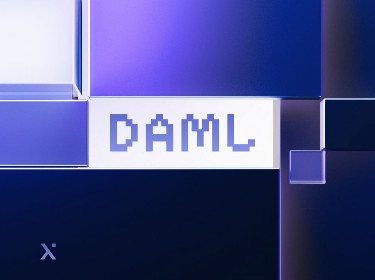Amid the buzz of blockchain and cryptocurrency, a web of myths persists. Now is the time to untangle the misunderstandings clouding the real potential of these technologies.
Blockchain and cryptocurrencies have become hot topics in the digital world. However, as their popularity grows, so do misconceptions.
Some people see them as game-changers, while others are hesitant because of the myths they’ve come across. Between overhyped claims and unnecessary fears, it can be hard to know what’s real.
This article is here to help. We’ll be diving into the top 10 myths surrounding blockchain and cryptocurrencies to set the record straight. Whether you’re a tech enthusiast or someone just trying to understand the hype, let’s cut through the noise together and get to the facts.
![]()
Myth 1 – Blockchain Coins Have Physical Equivalents
![]()
Fiat currency, governed by official regulations, remains the predominant physical form of money globally.
In contrast, blockchain enables the use of encrypted, fully digital cryptocurrencies that don’t require a physical counterpart for trading or payments.
The absence of a physical equivalent for cryptocurrencies doesn’t diminish their utility or legitimacy. In many ways, this digital nature grants them flexibility and global reach beyond traditional currencies. It also minimizes certain physical theft risks and overheads related to printing and minting.
Myth 2. Crypto and blockchain are not safe
Blockchain technology, which underpins all cryptocurrencies, boasts an innate robustness thanks to its decentralized design. Each transaction gets verified across a vast network of computers, making any unauthorized alterations practically impossible.
However, the crypto ecosystem extends beyond just the blockchain, and, as a result, vulnerabilities often emerge from secondary platforms like exchanges or wallets, not from the foundational blockchain itself. These breaches, widely reported in the media, stem more from human oversight or system lapses in these platforms than from inherent flaws in the cryptocurrency.
As with traditional banking, the onus of safety also lies on individual users. Secure passwords, two-factor authentication, and vigilant storage practices can significantly bolster one’s crypto security.
Dive into our comprehensive guide on key DeFi security challenges in the blockchain landscape, and discover expert advice on how to effectively mitigate these risks
Myth 3. Blockchain crypto transactions are instant
While cryptocurrencies are often lauded for their potential to offer swift transactions, the reality is more nuanced.
Some digital currencies can indeed surpass traditional banking systems in speed, particularly in the realm of international transfers. However, they don’t guarantee instantaneous results. Factors like network congestion, transaction fees set by senders, and the inherent characteristics of the cryptocurrency being used can influence the confirmation time.
Delving deeper into blockchain technology reveals a variety of platforms with different priorities. Some are engineered to match or even exceed the transaction speeds of conventional payment systems, but many emphasize the importance of a decentralized framework. In these systems, each transaction undergoes multiple confirmations across the network, bolstering its authenticity and security.
It’s a balancing act between speed and security, and while this layered verification offers robust protection against fraud, it might occasionally mean waiting a bit longer for a transaction to complete.
Myth 4. Cryptocurrencies will completely replace traditional money
The idea that cryptocurrencies will entirely replace traditional fiat currencies is a popular narrative, but it oversimplifies the complexities of both financial systems.
While cryptocurrencies offer numerous advantages, such as decentralized control, reduced transaction fees for international transfers, and potential financial inclusion for the unbanked, they also come with challenges, including price volatility, regulatory concerns, and a steep learning curve for many.
Traditional money, or fiat currency, has been deeply ingrained in global economies and societies for centuries. It is backed by governments and central banks, offering a level of stability and trust that crypto is still working towards. Additionally, many current infrastructures, systems, and daily transactions are built around the use of traditional money.
While there’s no doubt that cryptocurrencies are gaining traction and may play a significant role in the future of finance, it’s more likely they’ll coexist with traditional currencies rather than completely replace them. The future financial landscape may very well be a hybrid one, leveraging the strengths of both digital and traditional forms of money.
Ready to transform your business with blockchain? Explore our enterprise blockchain development services and take the first step towards innovation and efficiency today
Myth 5. Blockchain is solely tied to cryptocurrency
A common misconception is that blockchain technology is exclusively tied to cryptocurrencies. While it’s true that blockchain provided the foundation for the creation of Bitcoin and other digital currencies, its potential applications stretch far beyond the realm of finance.
Here’s a more detailed look:
Retail: Blockchain can enhance the transparency of product origins, ensuring authenticity and preventing counterfeit goods. For consumers, this means increased trust in the retailers they buy from.
Supply chain: With blockchain, every step of the product journey, from raw material sourcing to end consumer, can be traced. This not only reduces fraud but also ensures quality and ethical standards.
Healthcare: Patient records and medical histories can be securely stored on a blockchain, ensuring data privacy while also making the information easily accessible to authorized medical personnel.
Digital property: Copyrights, patents, and other digital assets can be registered on a blockchain, thus providing rightful ownership and reducing the potential for intellectual property theft.
Education: Institutions can issue certificates and degrees on a blockchain, making verification by employers and other organizations simpler and more transparent.
Compliance and risk management: In industries dealing with financial transactions ensuring compliance and managing risks is essential. Blockchain-powered solutions such as Know Your Transaction, can be used to mitigate financial risks and ensure that businesses stay compliant with evolving regulatory standards.
These diverse applications demonstrate the versatility of blockchain technology, indicating that it is not just a tool for crypto transactions, but a revolutionary framework capable of enhancing transparency, security, and efficiency across a multitude of sectors.
Myth 6. All blockchain systems are public platforms
![]()
The common perception is that blockchain, by nature, is a public platform with globally spread nodes, where every transaction and event is visible to all participants.
In reality, blockchain systems can accommodate various levels of privacy among nodes or even entire organizations.
The level of accessibility and privacy varies based on the type of blockchain platform:
- Public blockchains are open-access systems where all transactions and data are available to anyone. Bitcoin serves as a quintessential example. Anyone can trade, become a part of its development, or even initiate a chain fork.
- Private blockchains limit access, meaning that only specific individuals or entities have the authority to view and verify transactions. This design caters to corporations wanting both privacy and internal decentralization.
- Permissionless blockchains impose no restrictions on who can join, execute transactions, or even modify the blockchain’s code.
- Permissioned blockchains assign roles and responsibilities, establishing exclusive access rights for certain members and enforcing policies to regulate network interaction.
Dive into the HELO blockchain: an innovative, environmentally-friendly platform utilizing the Proof of Ethic consensus mechanism, masterfully crafted by PixelPlex blockchain developers
Myth 7. Crypto and blockchain are just a passing fad
When new technologies emerge, skepticism often follows suit — and blockchain and cryptocurrencies have been no exception, with some critics labeling them as fleeting trends.
However, a closer inspection of their trajectory suggests otherwise.
From global corporations to financial powerhouses, a diverse array of entities are not just exploring but actively integrating blockchain and crypto into their workflows and solutions, which signals a belief in the technologies’ enduring value.
Importantly, numerous countries and their governments are pivoting towards blockchain-based infrastructures. Dubai, often hailed as a blockchain development hub, hosts over 100 blockchain enterprises. Through the Smart Dubai initiative, it aspires to become the world’s first city wholly driven by blockchain.
The diversification of the crypto ecosystem also speaks volumes about its maturation. Beyond Bitcoin, altcoins such as Ethereum have introduced the concept of smart contracts development. Smart contracts are self-executing contracts with the agreement directly written into lines of code. These, for their part, have paved the way for DeFi platforms that aim to recreate traditional financial services in a decentralized manner, cutting out intermediaries and offering more inclusive access to financial tools.
The introduction of non-fungible tokens, too, has opened a new realm of possibilities, especially in the arts and entertainment sector. NFTs represent a unique digital asset verified by blockchain, allowing artists and creators to monetize their work in novel ways. As celebrities, musicians, and artists engage with this medium, it brings more attention and legitimacy to the broader crypto sphere. However, we advise to seek a professional NFT development agency help, if you consider getting into the NFT game.
Take a look at CheckNFT: a data-driven BI service for the NFT ecosystem engineered by the PixelPlex blockchain development team
Myth 8. All cryptocurrencies and blockchains work similarly
Blockchains differ, especially in how they achieve consensus within their networks. These varied blockchain consensus algorithms illustrate the diverse strategies used in the cryptocurrency world to balance speed, security, decentralization, and efficiency.
To grasp their nuances, let’s take a closer look at some of the most popular consensus algorithms and their characteristics:
Proof of Work, popularized by Bitcoin, relies on computational puzzles, and is considered to be energy-intensive.
Proof of Stake chooses validators based on how many coins they’re willing to lock up. Examples of blockchains running on the PoS mechanism include Cardano and Polkadot.
Delegated Proof of Stake (DPoS) that underpins platforms such as Tron and EOS further refines PoS by letting coin holders vote on a select group of validators, speeding up transactions but potentially centralizing the process.
Proof of Authority (PoA) emphasizes identity as a stake, where pre-approved validators engage in creating blocks. This method promises swift transactions and reduced energy consumption. Notable platforms utilizing PoA include VeChain and POA Network.
Proof of History (PoH) serves as an intrinsic synchronization mechanism, addressing the clock challenge in decentralized networks. Instead of relying on external references for transaction timestamps, PoH ensures a uniform internal clock for all nodes. Solana stands out as the blockchain employing the PoH consensus mechanism.
Myth 9. Only tech-savvy individuals and businesses can use cryptocurrencies and blockchains
Contrary to the prevalent myth, modern times have seen cryptocurrencies and blockchains becoming increasingly accessible to all.
The early technical challenges faced by crypto enthusiasts have been addressed, with modern crypto banking solutions now offering an experience as seamless as traditional online banking.
This ease of adoption is further amplified by a vast array of online educational resources. From in-depth websites to dynamic forums, those new to the scene can readily find guides and discussions that simplify the multifaceted world of digital currencies.
Further bridging the gap between the digital currency sphere and the general public is the integration of cryptocurrency transactions into mainstream platforms, such as PayPal. These seamless incorporations, blending the realms of traditional finance with digital assets, accentuate the fact that the world of crypto is no longer just for the tech-savvy.
Myth 10. Crypto and blockchain are harmful to the environment
Many are concerned about the environmental footprint of blockchain and cryptocurrencies, given the significant energy consumption some platforms require (e.g. the PoW-powered Bitcoin blockchain), often mirroring the energy demands of sizable industries or regions.
However, it’s not quite accurate to assess the entire blockchain and crypto realm based solely on this aspect. Many blockchain projects are actively working towards more sustainable solutions. For instance, Ethereum, which used to use a lot of energy with PoW, made a transition to Proof of Stake in its Ethereum Merge, thus cutting down its energy use.
Furthermore, the emergence of carbon credit tokenization in the blockchain space is a testament to the industry’s proactive approach. Leveraging blockchain’s transparent and immutable properties, projects are now developing platforms to track, verify, and trade carbon credits, ensuring that carbon offset initiatives are both credible and impactful.
Newer blockchain projects also prioritize energy-efficient consensus algorithms right from the outset. With initiatives ranging from green crypto mining and NFT minting solutions to carbon credit platforms, the blockchain and crypto domains are clearly charting a course toward a more sustainable future.
Conclusion
The digital frontier of blockchain and cryptocurrencies is as exciting as it is misunderstood. As we’ve unraveled the ten most widespread blockchain and cryptocurrency myths, it becomes clear that while these technologies hold transformative potential, misconceptions can hinder true appreciation and adoption.
It’s crucial to differentiate between myth and reality, especially in an age driven by innovation.
For those intrigued by blockchain’s vast potential and seeking expert guidance, look no further. At PixelPlex, we pride ourselves on delivering cutting-edge blockchain development solutions tailored to your needs.
From dApp creation to cryptocurrency exchange development, we can assist you with developing an efficient blockchain-powered solution.
Dive deeper into the world of decentralized technology with us and let’s craft the future, myth-free.




